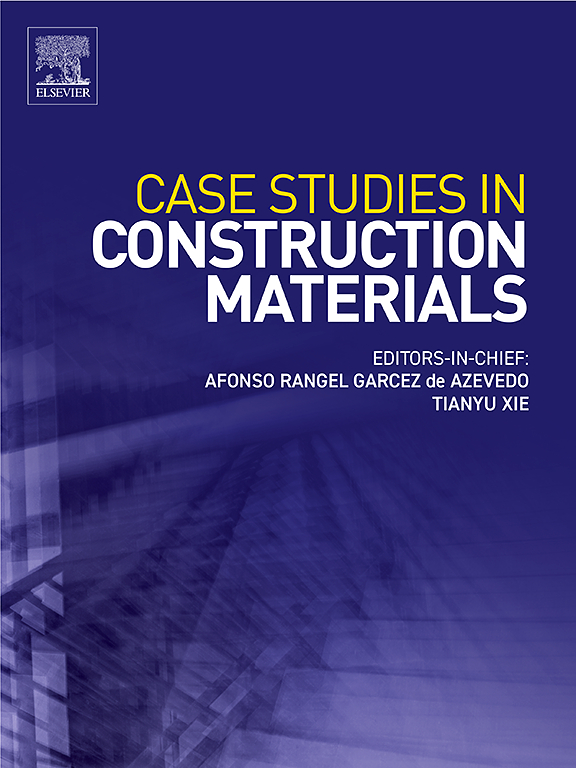纵向连续板轨道宽、窄节点ecc修复细观力学损伤行为
IF 6.6
2区 工程技术
Q1 CONSTRUCTION & BUILDING TECHNOLOGY
引用次数: 0
摘要
纵向连续板轨道窄宽接缝混凝土在温度荷载作用下容易出现破碎、开裂等病害,影响其完整性和耐久性。为此,本文引入高韧性工程胶凝复合材料(ECC)作为宽缝和窄缝的修复材料,对其温度细观损伤特征进行了实验和数值研究。首先进行了试验试验,确定了混凝土与ECC的粘结参数。然后,采用子建模方法建立了考虑宽窄节理细观特征和层间非线性粘结行为的纵向连续板坯轨迹宏观细观模拟模型;最后,研究了不同纤维含量、基体强度和界面粘结强度下宽、窄接头在整体温度载荷作用下的细观损伤行为和界面损伤特征。结果表明:(1)添加2.5 %纤维的宽窄节理的断裂载荷比未添加纤维的节理高31 %,但对初始裂缝载荷和位移影响不大;(2)基体强度对损伤的影响呈线性规律。当混凝土强度由C35增加到C60时,温升作用下宽缝和窄缝的最大压缩损伤系数由0.9237降低到0.4752。(3)提高粘结面法向强度,降低切向刚度,可有效延缓界面损伤的发生。本文章由计算机程序翻译,如有差异,请以英文原文为准。
Meso-scale mechanical damage behavior of ECC-repaired wide and narrow joints of longitudinally continuous slab tracks
The narrow and wide joint concrete of longitudinally continuous slab tracks is prone to diseases such as crushing and cracking under temperature load, which affects the integrity and durability. Therefore, this paper introduces high-toughness Engineered Cementitious Composites (ECC) as the repair material for the wide and narrow joints and conducts experimental and numerical investigation on the temperature-induced meso-scale damage characteristics. Firstly, experimental tests were carried out to determine the bonding parameters between concrete and ECC. Then, a macro-meso simulation model of longitudinally continuous slab tracks that accounts for the meso-scale characteristics of the wide and narrow joints and the nonlinear interlayer bond behavior was constructed using a sub-modeling approach. Finally, the meso-scale damage behavior and interface damage characteristics of the wide and narrow joints under different fiber contents, matrix strengths, and interface bond strengths under overall temperature loads were studied. Results show: (1) The fracture load of wide and narrow joints with 2.5 % fiber added is 31 % higher than that without fiber added, but it has little effect on the initial crack load and displacement. (2) The influence of matrix strength on damage follows a linear pattern. When the concrete strength increased from C35 to C60, the maximum compressive damage factor of the wide and narrow joints under temperature rise decreased from 0.9237 to 0.4752. (3) Improving the normal strength of the bonding surface and reducing the tangential stiffness can effectively delay the initiation of interface damage.
求助全文
通过发布文献求助,成功后即可免费获取论文全文。
去求助
来源期刊

Case Studies in Construction Materials
Multiple-
CiteScore
7.60
自引率
19.40%
发文量
842
审稿时长
63 days
期刊介绍:
Case Studies in Construction Materials provides a forum for the rapid publication of short, structured Case Studies on construction materials. In addition, the journal also publishes related Short Communications, Full length research article and Comprehensive review papers (by invitation).
The journal will provide an essential compendium of case studies for practicing engineers, designers, researchers and other practitioners who are interested in all aspects construction materials. The journal will publish new and novel case studies, but will also provide a forum for the publication of high quality descriptions of classic construction material problems and solutions.
 求助内容:
求助内容: 应助结果提醒方式:
应助结果提醒方式:


